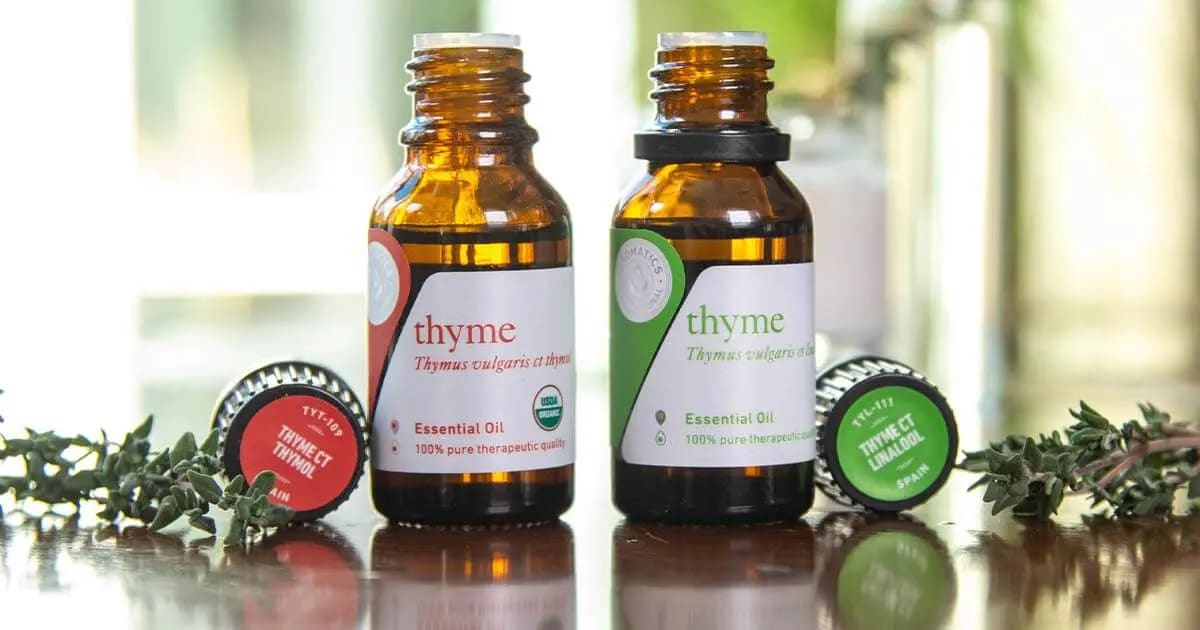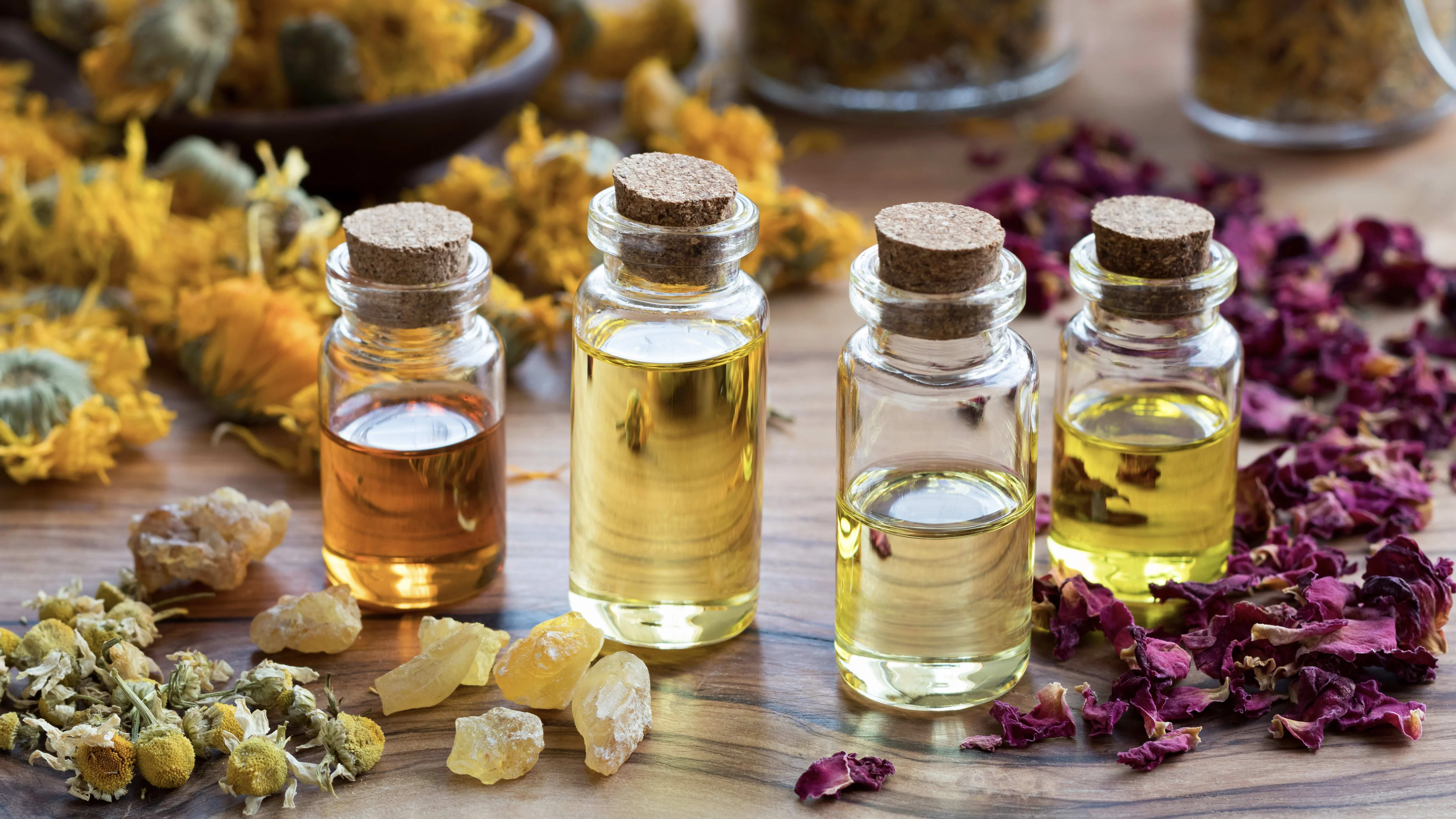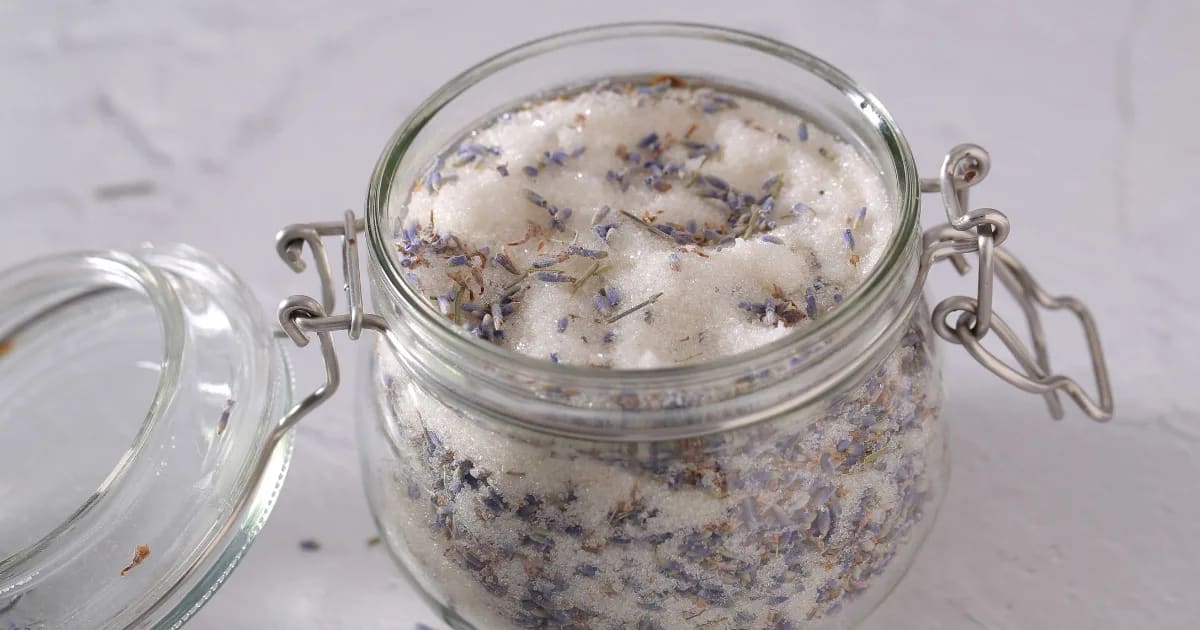Thyme for Relief

Relieve pain with this all-natural, anti-inflammatory blend!
Thyme essential oil’s proven anti-inflammatory properties make it an excellent choice as a natural pain reliever.
One research study found that thyme oil was able to reduce inflammation by 75% thanks to its primary component: carvacrol.
Carvacrol works by reducing a natural enzyme in the body that promotes inflammation: COX-2.
(Review the research!)
We just had to make an inflammation-calming recipe based on this research! However, we didn’t want to use the carvacrol-rich type of thyme (Thymus vulgaris ct carvacrol). That’s because carvacrol can seriously irritate the skin.
And if you’re blending for pain and inflammation, you don’t want something that’s going to cause more discomfort.
Fortunately, there are several varieties of thyme essential oil!
We chose to work with thyme ct thymol (Thymus vulgaris ct thymol). The molecule thymol is a “structural isomer” of carvacrol—the two molecules are very closely related. And in the research, thymol was proven to reduce COX-2 as effectively as carvacrol.
Why this recipe works
Three of the oils in this recipe were selected based on a research study that demonstrated their demonstrated ability to help suppress the inflammatory enzyme COX-2:
Clove bud (Syzygium aromaticum/Eugenia caryophyllata)
Rose (Rosa × damascena)
Thyme ct thymol (Thymus vulgaris ct thymol)
And adding lavender essential oil (Lavandula angustifolia) to the blend helps supercharge its inflammation-calming power! That’s because lavender is rich in the molecule linalool. Linalool has been well studied for its anti-inflammatory benefits, plus it’s super-soothing for the skin!
Thyme for Relief
Gently massage this oil into areas that feel sore, achy, and inflamed.
Ingredients
1 fl oz Jojoba Oil (Simmondsia chinensis)
8 drops Lavender Oil (Lavandula angustifolia)
5 drops Thyme Oil (Thymus vulgaris ct thymol)
3 drops Clove Bud Oil (Syzygium aromaticum/Eugenia caryophyllata)
2 drops Rose Oil (Rosa × damascena)
Equipment
1 oz (30 ml) glass bottle
Directions
Pour the jojoba oil into a 1 oz glass bottle until it is nearly full.
Add the essential oils.
Close the bottle and shake gently to combine.
Safety and substitution notes
This blend is intended for short-term use (not to address chronic issues over extended time periods).
Thyme ct thymol essential oil is rich in thymol, a component that can irritate skin and mucous membranes. Keep your dilution to 1% (about 5 drops of essential oil). In this recipe, thyme ct thymol is present at 1%, so it’s safe.
If you don’t have thyme ct thymol or would rather avoid it, substitute thyme ct linalool (Thymus vulgaris ct linalool).
Clove bud essential oil contains eugenol, a super-potent component that can irritate skin and mucous membranes. It’s so strong that we suggest diluting it at less than 0.5%. This recipe includes clove bud at 0.5%, so we’re good!
According to Essential Oil Safety (second edition), by Robert Tisserand and Rodney Young, oils high in eugenol aren’t a good choice for people with blood clotting disorders or impaired liver function.
If you’d like a substitute for clove bud, try cardamom (Elettaria cardamomum) or ginger (Zingiber officinale).
REFERENCES
Guimarães, A.G., Quintans, J.S.S. and Quintans-Júnior, L.J. (2013) Monoterpenes with analgesic activity – a systematic review. Phytotherapy Research 27, 1-15
Hotta, M., Nakata, R., Katsukawa, M., Hori, K., Takahashi, S., Inoue, H. (2010) Carvacrol, a component of thyme oil, activates PPARa and y and suppresses COX-2 expression. Journal of Lipid Research. 51, 1, P132-139. doi.org/10.1194/jlr.M900255-JLR200
Peanna, A.T., D’Aquila, P.S., Panin, F., Serra, G., Pippia, P. and Moretti, M.D. (2002) Anti-inflammatory activity of linalool and linalyl acetate constituents of essential oils. Phytomedicine 9, 721-726.
Tisserand, R. and Young, R. (2014) Essential Oil Safety 2nd Edition. Edinburgh: Churchill Livingstone.
Youssef, J., Badr, M. (2004) Role of Peroxisome Proliferator-Activated Receptors in Inflammation Control. BioMed Research International. V2004. 927276. doi.org/10.1155/S1110724304308065





